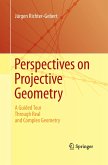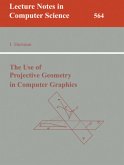Symmetry and Pattern in Projective Geometry is a self-contained study of projective geometry which compares and contrasts the analytic and axiomatic methods. The analytic approach is based on homogeneous coordinates, and brief introductions to Plücker coordinates and Grassmann coordinates are presented. This book looks carefully at linear, quadratic, cubic and quartic figures in two, three and higher dimensions. It deals at length with the extensions and consequences of basic theorems such as those of Pappus and Desargues. The emphasis throughout is on special configurations that have particularly interesting symmetry properties. The intricate and novel ideas of 'Donald' Coxeter, who is considered one of the great geometers of the twentieth century, are also discussed throughout the text. The book concludes with a useful analysis of finite geometries and a description of some of the remarkable configurations discovered by Coxeter. This book will be appreciated by mathematics students and those wishing to learn more about the subject of geometry. It makes accessible subjects and theorems which are often considered quite complicated and presents them in an easy-to-read and enjoyable manner.
From the reviews:
"Here, readers meet a slice of geometry, intermediate between elementary Euclidean and modern algebraic, where first come the objects, extraordinary, surprising, and intriguing. By meeting and literally seeing these special objects, specifically linear configurations and various projective varieties of low dimension and low degree, undergraduates can--perhaps for the first time--really experience mathematics as a phenomenological science. ... Summing Up: Highly recommended. Upper-division undergraduates through researchers/faculty." (D. V. Feldman, Choice, Vol. 51 (2), October, 2013)
"The book under review presents an introduction to projective geometry as well as some preliminary results on algebraic geometry and finite geometries. ... This is a well-illustrated, self-contained textbook on projective geometry. Both the basics and the significant facts are presented in an original manner. The book is intended for undergraduate students in mathematics and computer science." (Georgi Hristov Georgiev, Mathematical Reviews, September, 2013)
"The author wanted to convey some of the fascination he feels for the subject. ... Nice figures, some in color, illustrate perspective. ... this is a nice introduction for those with an interest in geometry." (Arthur Gittleman, Computing Reviews, July, 2013)
"Here, readers meet a slice of geometry, intermediate between elementary Euclidean and modern algebraic, where first come the objects, extraordinary, surprising, and intriguing. By meeting and literally seeing these special objects, specifically linear configurations and various projective varieties of low dimension and low degree, undergraduates can--perhaps for the first time--really experience mathematics as a phenomenological science. ... Summing Up: Highly recommended. Upper-division undergraduates through researchers/faculty." (D. V. Feldman, Choice, Vol. 51 (2), October, 2013)
"The book under review presents an introduction to projective geometry as well as some preliminary results on algebraic geometry and finite geometries. ... This is a well-illustrated, self-contained textbook on projective geometry. Both the basics and the significant facts are presented in an original manner. The book is intended for undergraduate students in mathematics and computer science." (Georgi Hristov Georgiev, Mathematical Reviews, September, 2013)
"The author wanted to convey some of the fascination he feels for the subject. ... Nice figures, some in color, illustrate perspective. ... this is a nice introduction for those with an interest in geometry." (Arthur Gittleman, Computing Reviews, July, 2013)








